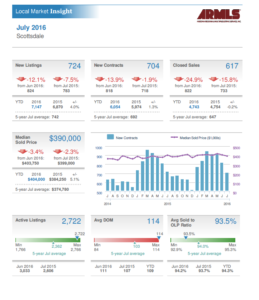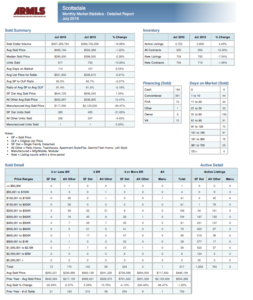 By Joe Szabo, Scottsdale Real Estate Team
In today’s market, many buyers forego fixer-uppers for move-in ready homes. As a result, significant opportunities abound in prime locations as homes that need work linger on the market.
In competitive markets, savvy consumers gravitate toward these homes that nobody else wants. Why? They can customize the home to their requirements, and build some equity along the way.
That said, I often recommend that buyers live in a new home for a while before undertaking any major remodeling or pricey home improvements. I’m not talking about lighting or plumbing repairs necessary to make the house habitable. Rather, I’m referring to discretionary remodeling, expansions, and other improvement projects.
Here are three good reasons to at least consider holding off on the big home improvement projects until you’ve had some time to settle in.
By Joe Szabo, Scottsdale Real Estate Team
In today’s market, many buyers forego fixer-uppers for move-in ready homes. As a result, significant opportunities abound in prime locations as homes that need work linger on the market.
In competitive markets, savvy consumers gravitate toward these homes that nobody else wants. Why? They can customize the home to their requirements, and build some equity along the way.
That said, I often recommend that buyers live in a new home for a while before undertaking any major remodeling or pricey home improvements. I’m not talking about lighting or plumbing repairs necessary to make the house habitable. Rather, I’m referring to discretionary remodeling, expansions, and other improvement projects.
Here are three good reasons to at least consider holding off on the big home improvement projects until you’ve had some time to settle in.
3 Reasons to Live in a New Home Before Renovating By Joe Szabo, Scottsdale Real Estate Team
 By Joe Szabo, Scottsdale Real Estate Team
In today’s market, many buyers forego fixer-uppers for move-in ready homes. As a result, significant opportunities abound in prime locations as homes that need work linger on the market.
In competitive markets, savvy consumers gravitate toward these homes that nobody else wants. Why? They can customize the home to their requirements, and build some equity along the way.
That said, I often recommend that buyers live in a new home for a while before undertaking any major remodeling or pricey home improvements. I’m not talking about lighting or plumbing repairs necessary to make the house habitable. Rather, I’m referring to discretionary remodeling, expansions, and other improvement projects.
Here are three good reasons to at least consider holding off on the big home improvement projects until you’ve had some time to settle in.
By Joe Szabo, Scottsdale Real Estate Team
In today’s market, many buyers forego fixer-uppers for move-in ready homes. As a result, significant opportunities abound in prime locations as homes that need work linger on the market.
In competitive markets, savvy consumers gravitate toward these homes that nobody else wants. Why? They can customize the home to their requirements, and build some equity along the way.
That said, I often recommend that buyers live in a new home for a while before undertaking any major remodeling or pricey home improvements. I’m not talking about lighting or plumbing repairs necessary to make the house habitable. Rather, I’m referring to discretionary remodeling, expansions, and other improvement projects.
Here are three good reasons to at least consider holding off on the big home improvement projects until you’ve had some time to settle in.

 By
By  By
By  By
By  By
By  By
By 
 Considering a purchasing or selling a property in Scottsdale? Call Joe and Linda Szabo – The Scottsdale Real Estate Experts!
We hope that you enjoy reading and analyzing the Scottsdale Luxury Home Report and should you have any questions or comments, please feel free to Contact Joe Szabo at 480.688.2020 or email him directly at
Considering a purchasing or selling a property in Scottsdale? Call Joe and Linda Szabo – The Scottsdale Real Estate Experts!
We hope that you enjoy reading and analyzing the Scottsdale Luxury Home Report and should you have any questions or comments, please feel free to Contact Joe Szabo at 480.688.2020 or email him directly at  By
By  By
By  By
By 

